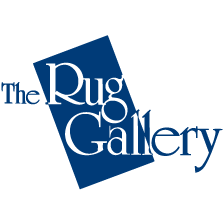Rugs Through the Decades: A Look at Cincinnati’s Favorite Rug Styles

Step into the charming neighborhoods of Cincinnati and take a journey through time as we explore the history and styles that help make each community unique. Five distinct area neighborhoods—Columbia-Tusculum, Wyoming, Hyde Park, Fort Mitchell, and Blue Ash—will help us showcase the rug styles that have become synonymous with the rise of popular architectural styles throughout the decades.
From the elegant Victorian houses of Columbia-Tusculum to the sleek Midcentury Modern homes of Blue Ash, learn about the rug styles that have enhanced these spaces throughout the decades. Whether you’re a resident of these neighborhoods or simply seeking inspiration for your own home, join us as we uncover the secrets to incorporating these timeless rug styles into your living spaces today.
Columbia-Tusculum’s Victorian Style of the 1800s
The Columbia-Tusculum neighborhood is known for its rich history and charming architectural character. It holds the distinction of being Cincinnati’s oldest neighborhood, with roots dating back to the late 18th century. Established in 1788, Columbia-Tusculum was initially a farming community. Later, it became a bustling suburb during the Victorian era. The neighborhood’s name was inspired by the Tusculum estate of the Roman orator Cicero.
Columbia-Tusculum showcases a diverse array of house styles that reflect its long history. Many of the homes in the area date back to the early 19th century and display beautiful Victorian and Italianate architectural designs. The Victorian-style houses often feature ornate details, such as intricate woodwork, colorful decorative trim, and grand porches. Meanwhile, the Italianate-style homes exhibit a more elegant and symmetrical appearance, with tall windows, low-pitched roofs, and sometimes even cupolas.
Oriental rugs
During this period, rugs played an integral role in interior design. The popularity of Oriental rugs surged during this time, with Persian and Turkish designs being particularly favored. These rugs featured intricate patterns, vibrant colors, and high-quality materials such as silk or wool. Oriental rugs were often used to add warmth, texture, and visual interest to Victorian homes. They were commonly found in grand parlors, dining rooms, and bedrooms.
Oriental rugs are truly timeless. Look for rugs with traditional Persian or Turkish designs, featuring floral motifs, medallions, or intricate borders. Opt for rich, warm colors like deep reds, blues, and golds, or any hue that complements your home.
Wyoming’s Colonial Revival Style of the 1870s
Wyoming’s development was influenced by the arrival of the Miami and Erie Canal in the 1820s. The canal brought economic growth and facilitated trade and transportation in the area. The city was officially incorporated in 1874 and experienced significant development during the late 19th and early 20th centuries. Its growth was fueled by its proximity to Cincinnati and the expansion of rail lines, which improved accessibility to the city.
Colonial Revival became a popular architectural style in the late 19th and early 20th centuries, reflecting a renewed interest in the traditional designs of the American Colonial period. In Wyoming, you can find many homes exhibiting this style, characterized by symmetrical facades, multi-pane windows, gable roofs, and often featuring grand front entrances with columns or porticos. These homes exude a sense of timeless elegance and are sought after for their historic charm and craftsmanship.
Hooked rugs
Hooked rugs were a popular choice for Colonial Revival interiors. These rugs were crafted by pulling loops of yarn or fabric strips through a base material, usually burlap or linen, using a hooking tool. They often featured charming and folk-inspired designs, such as floral patterns, animals, or geometric motifs. Hooked rugs provided warmth, comfort, and added visual interest to the floors of Colonial Revival homes.
Draw inspiration from the Colonial Revival era while adding a modern touch. Seek out hooked rugs with traditional motifs like flowers, roosters, or geometric shapes to evoke nostalgia for the past. Opt for a color palette that complements the overall decor scheme of the room. Earth tones, muted blues, greens, and warm neutrals are popular choices.
Hyde Park’s Tudor Revival Style of the 1900s
Hyde Park is a charming and historic area known for its tree-lined streets, eclectic shops, and diverse architectural styles. The neighborhood’s history dates back to the late 19th century when it began as a streetcar suburb and quickly grew into a prosperous community.
Hyde Park features a variety of architectural styles, but one that stands out is the Tudor Revival. This architectural style gained popularity in the early 20th century and sought to emulate the traditional English Tudor architecture. Tudor Revival homes in Hyde Park are characterized by their steeply pitched roofs, decorative half-timbering, prominent chimneys, and masonry or stucco exteriors. These homes exude a sense of charm, character, and old-world elegance.
Axminster rugs
While Oriental rugs were popular during this time, another style that emerged was the Axminster rug. Axminster rugs originated in England and were known for their rich colors, intricate patterns, and high-quality craftsmanship. These machine-woven rugs often featured floral motifs, geometric designs, or intricate medallions, and were made using a cut-pile technique. Axminster rugs became a sought-after choice for many homeowners during the Tudor Revival period, complementing the architectural style of their homes.
To incorporate a Tudor Revival-style rug into your home, consider seeking out Axminster-style rugs or a similar design. Look for rugs with intricate patterns, floral or botanical motifs, or geometric designs. Opt for warm color palettes with rich jewel tones like burgundy, deep greens, or golds to evoke the traditional elegance of the Tudor era.
Fort Mitchell’s Craftsman Style of the 1920s
Across the river, Fort Mitchell is a charming suburb known for its tree-lined streets and historic homes. The neighborhood showcases many examples of the Craftsman style—also known as Arts and Crafts or Mission style—which emerged during the early 20th century as a response to the ornate Victorian architecture prevalent at the time.
Craftsman-style homes in Fort Mitchell typically feature low-pitched roofs, wide front porches with tapered columns or piers, and an emphasis on natural materials such as wood and stone. The interiors often exhibit open floor plans, built-in cabinetry, and a focus on handcrafted details. These architectural elements create a warm and inviting atmosphere, reflecting the principles of simplicity, functionality, and craftsmanship.
Mission-style rugs
Typically made of high-quality wool, Mission-style rugs featured earthy colors and natural motifs such as stylized flowers, leaves, or geometric patterns. These rugs were known for their durability and exquisite handwork, often incorporating hand-knotting or hand-tufting techniques. Craftsman-style homes embraced the idea of handmade, artisanal pieces, and the Arts and Crafts rugs perfectly complemented the warm woodwork, exposed beams, and natural materials found within these homes.
Using Arts and Crafts style rugs into your own home can be a wonderful way to embrace the timeless appeal of this design aesthetic. Look for rugs featuring geometric motifs in warm hues like deep reds, golden yellows, and earthy browns. Pair your Mission-style rug with other elements such as simple, functional furniture, handmade ceramics, and nature-inspired artwork to create a harmonious and authentic ambiance.
Blue Ash’s Midcentury Modern Style of the 1950s
Although Blue Ash had been settled since the 1870s, it wasn’t officially incorporated as a village until the 1950s. Today, Blue Ash is known for its diverse community and thriving business district. The city experienced significant growth and development during the post-World War II era, resulting in a notable concentration of mid-century modern homes.
Mid-century modern architecture, which emerged in the mid-20th century, sought to embrace functionality, simplicity, and a connection with nature. Blue Ash showcases a range of ranch and split-level homes characterized by clean lines, open floor plans, large windows, and integration with the surrounding landscape. These homes often feature low-pitched roofs, exposed beams, flat planes, and an emphasis on indoor-outdoor living.
Modern rugs
One prevalent rug style was the shag rug, characterized by its deep, plush pile and luxurious texture. Another popular style was the geometric patterned rug, inspired by the abstract and graphic designs that were in vogue during the mid-century period. These rugs featured bold shapes and lines, often arranged in repetitive patterns, creating a visually striking effect. Natural fiber rugs such as jute and sisal were also favored for their simplicity and organic appeal, blending well with the minimalist and nature-inspired design themes that were prevalent in mid-century homes.
When incorporating modern-style rugs into your home, there are several key considerations. Embrace geometric designs that complement the clean lines and angular features of mid-century modern interiors. Look for rugs with bold patterns featuring squares, rectangles, circles, or abstract shapes. Vibrant colors like mustard yellow, teal, orange, or earthy tones such as olive green and warm browns capture the retro vibe. Or, choose rugs made from natural materials like wool, jute, or cotton, which were popular during the era and contribute to an authentic look.
Conclusion
We hope you’ve been inspired by the rich history and diverse architectural beauty of these neighborhoods. As you can see, each neighborhood and rug style has its own distinct personality. Whether you’re a homeowner in one of these neighborhoods or anywhere else in the area, we invite you to visit The Rug Gallery—where our vast collection of rugs caters to every style and taste.
Let our experts guide you in finding the perfect rug that not only complements your home but also tells a story of its own. Create a warm and inviting atmosphere in your living space with the right rug from The Rug Gallery today. Your home deserves nothing but the best, and we’re here to help you make it truly special.






